Connector Failure
Gideon Analytical Laboratories received two failed terminal block electrical connectors from two different installation sites. These terminal connectors connect two or more wires to a single connection point, providing a convenient method of connecting electrical wiring without splicing or physically joining the ends. The two connectors were identical in construction, and both appeared burned out from overpower.
The connector was cross-sectioned and SEM-EDS analysis performed. The screws in the terminal block connector typically are tin plated copper clad iron. Pictures from the first connector, as shown directly below, show the results of extreme temperature elevation with black carbonization and melted housing. Also, the wire was missing in this connector. EDS spectral analysis revealed the inside shaft was plated with tin on brass. A micrograph of the shaft shows many cracks in the plating.
The bottom picture is of the screw on top, which was barely making any contact with the copper. The interface had a delaminating tin peel. This was not a good electrical connection. The final analytical results were that there were two problems: poor tin plating on the copper wire and lack of torquing to produce a good electrical contact.
Gideon Analytical Laboratories can provide companies in the electronics industry with invaluable analytical information that they can use to save time, save money, and plan for the future business. Gideon Analytical Laboratories offers creative problem solving, consultation, and assistance when targeting the origins of failed electronic components.

Poor contact
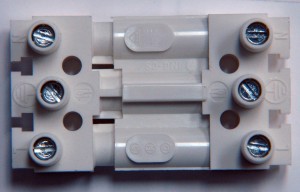
IMO-CS Electrical Connector
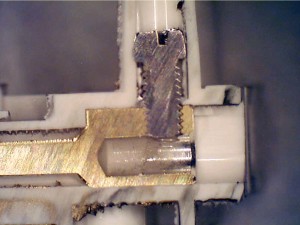
Cross section of IMO-CS
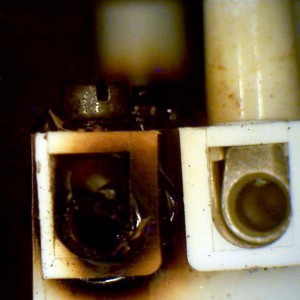
Burned socket hole
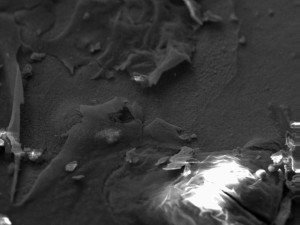
Flaking plating on shaft
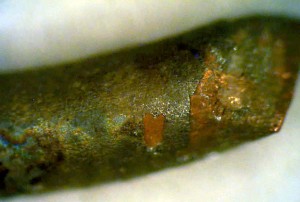
Poor nickel plating on wire
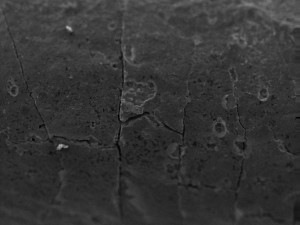
Cracked plating
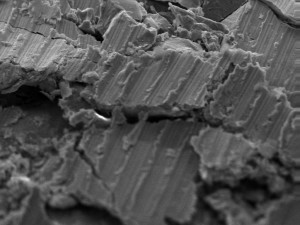
Lifting plating